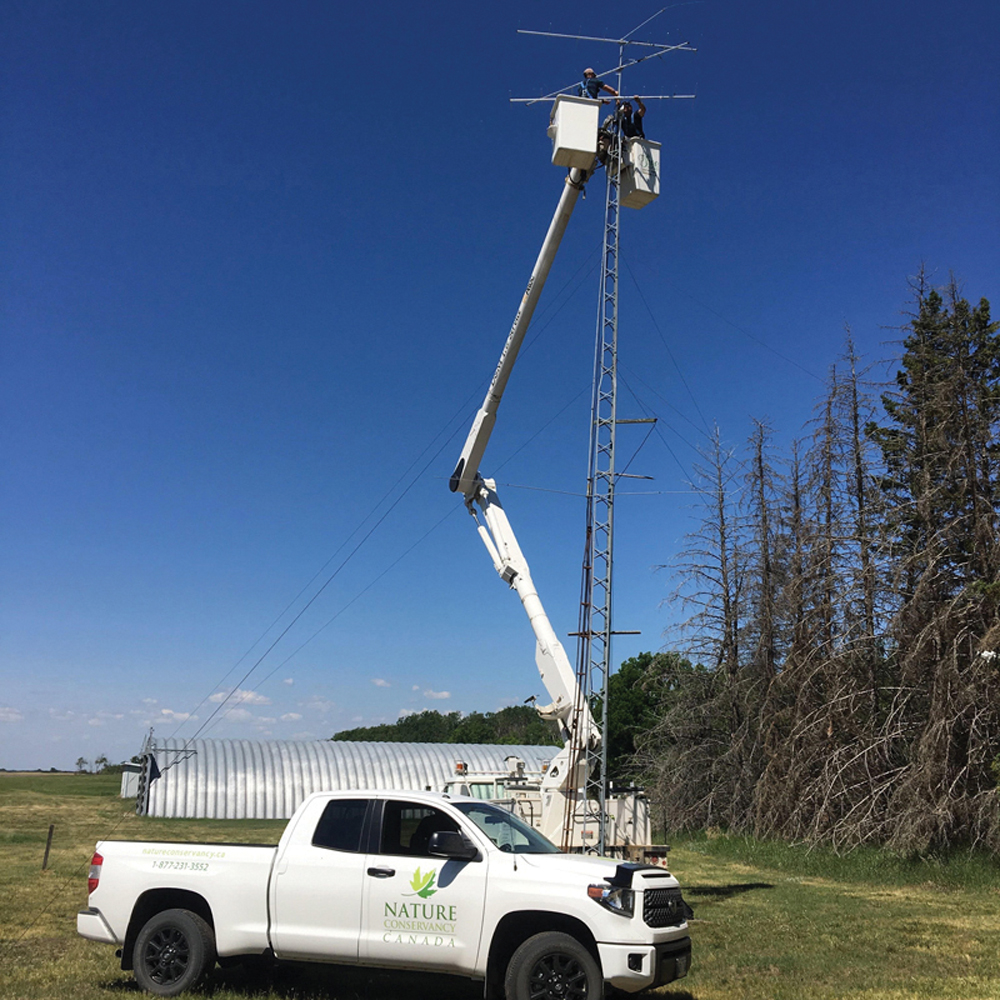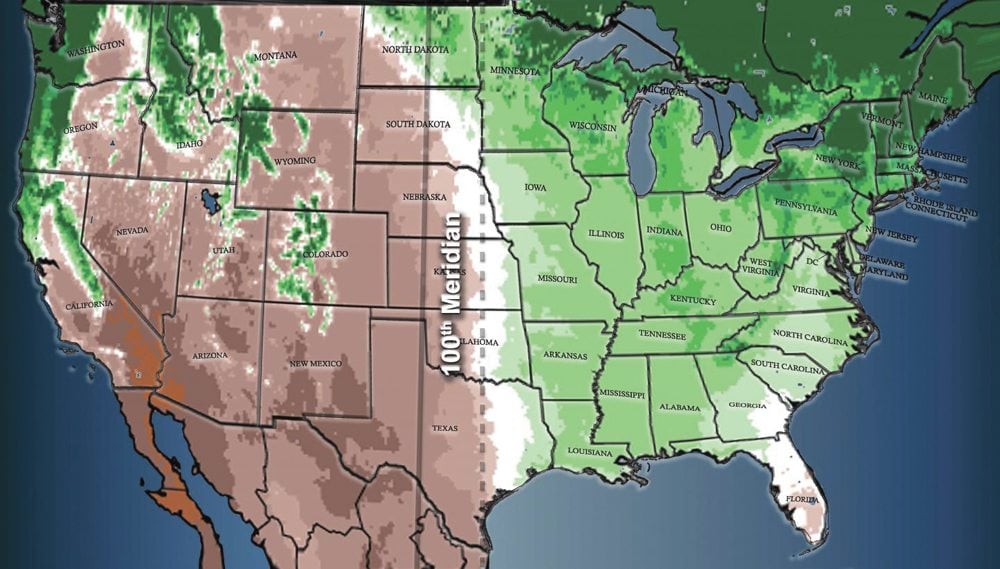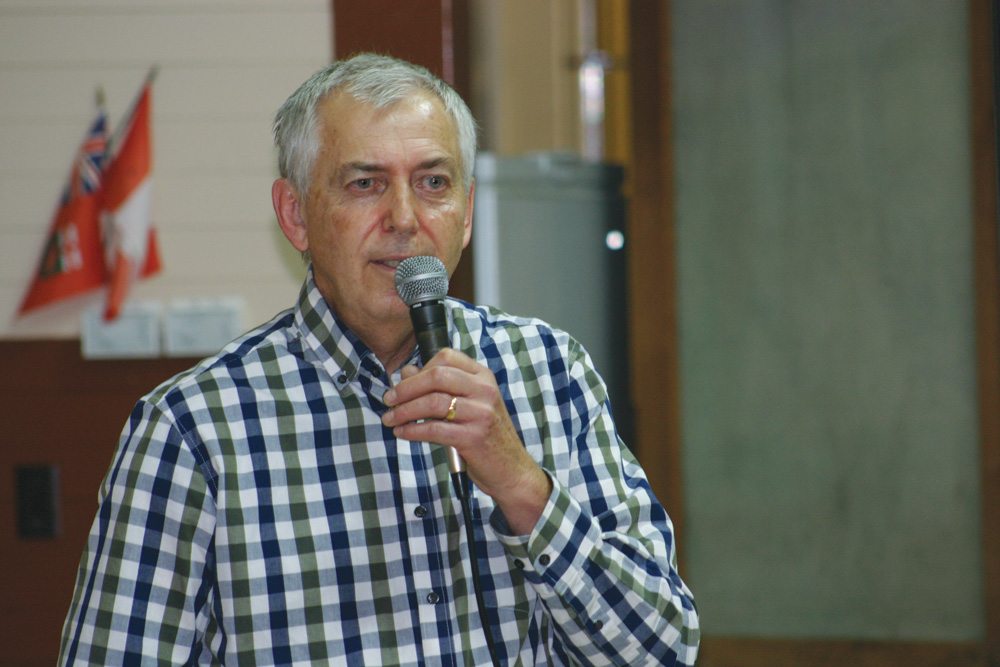Volunteers are the backbone of all successful conservation agencies and the Nature Conservancy of Canada (NCC) is a good example, as demonstrated during a conservation volunteer (CV) event held at the Yellow Quill Prairie Preserve.
“They counted and identified everything that slithered, hopped, burrowed, flew or flowered,” said Cathy Shaluk, communications and outreach co-ordinator for the Manitoba region of the Nature Conservancy of Canada.
During a six-hour “blitz” event, volunteers took inventory of all the wildlife and plants at the Yellow Quill Prairie Preserve (YQPP) located northeast of Wawanesa. By massing a large group of volunteers, the task was completed quickly, thus providing a snapshot of the wildlife and plants present at this impor tant habi tat location.
Read Also

Giant Canada geese have gone wild in Manitoba
Giant Canada geese are seemingly everywhere and can be fine table fare for local hunters, but 70 years ago, they were borderline extinct.
“Conservation of our natural areas cannot be accomplished alone,” said Shaluk. “NCC has been working with many partners to achieve common goals and protect the most critical habitat.
“Some of the outstanding sightings at the YQPP included the endangered Prairie Skink, Manitoba’s only lizard, a nationally threatened bird, Sprague’s Pipit and a number of provincially uncommon species such as the Smooth Green Snake and the elusive hognose snake,” said Shaluk. “All of the sightings of plant and animal species are added to a national data base that will assist NCC and other organizations in future conservation and stewardship programming.”
The group consisted of volunteers from NCC’s Scientific Advisory Committee, Brandon University, Brandon Naturalist Society, Nature Manitoba and people living in the surrounding community.
This is not the only conservation volunteer event carried out by the NCC. The CV program engages people in conserving biodiversity, while providing a meaningful and educational experience in ecologically significant natural areas, according to Shaluk. The types of CV events include: habitat restoration, tree planting, seed collection, fencing, trail building, inventories and monitoring birds, plants, insects and many other activities. If becoming a conservation volunteer appeals to you, then a fulfilling opportunity awaits. Volunteers are needed for the upcoming field season for events ranging from invasive weed pulls to property cleanups to rare plant surveys.
NCC’s YQPP is located 20 kilometres southeast of Brandon and two kilometres north of the junction of the Souris and Assiniboine rivers. It abuts the western boundary of the Canadian Forces Base Shilo training grounds and is immediately north of the Assiniboine Corridor Wildlife Management Area.
The Nature Conservancy of Canada is Canada’s leading national land conservation organization, and is dedicated to the preservation of areas of ecological significance, and to the long-term stewardship of the living natural communities that inhabit them.
“By protecting irreplaceable habitat and the plants and animals that it supports, we can ensure that future generations will be able to enjoy its natural beauty,” said Ursula Goeres, Manitoba regional vice-president.
Since 1962, NCC and its partners have conserved more than 800,000 hectares (two million acres) of ecologically significant habitat. Their efforts are concentrated on the most critical habitat throughout the province.
Three of these areas are located in southwestern Manitoba including the West Souris mixed-grass prairie, Souris River Valley grassland and Oak Lake sandhills and wetlands. The Nature Conservancy of Canada has identified the conservation actions that will take place on these threatened habitats.
In part, the Nature Conservancy of Canada achieves its goals by accepting donations and purchasing lands where rare and endangered plants and animals are found. An example of their landholdings is the YQPP. Another method they use is the conservation easement agreement.
This tool allows landowners to permanently protect habitat for future generations by voluntarily limiting or restricting the type and amount of development that may take place on their lands. The landowner continues to hold title to the land and enjoy the other benefits of landownership.
If you would like to become a conservation volunteer, protect your land with a conservation agreement or participate in any of the Nature Conservancy of Canada programs, please call the Manitoba Region’s toll-free number: 1-866-683-6934 or visit the NCC website: www.nature conservancy.ca/mb.
———
CATHY SHALUK
“NCChasbeenworking withmanypartners toachievecommon goalsandprotectthe mostcriticalhabitat.”


















